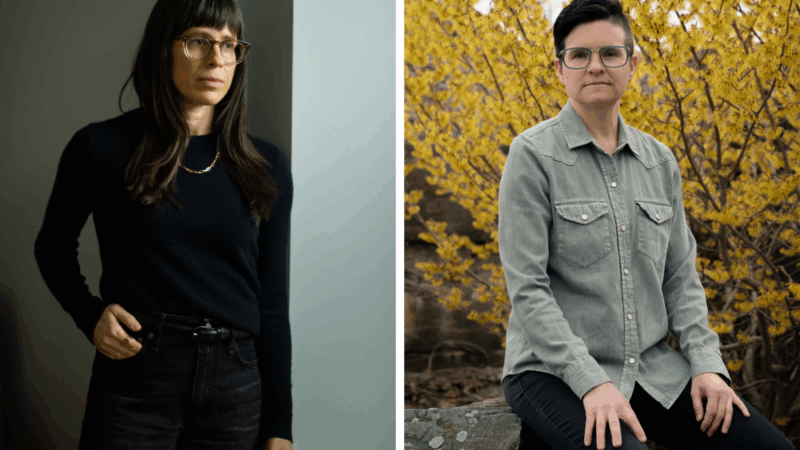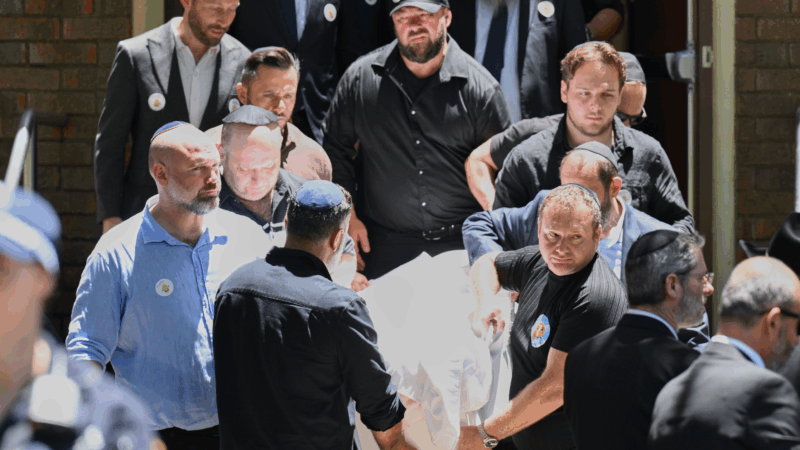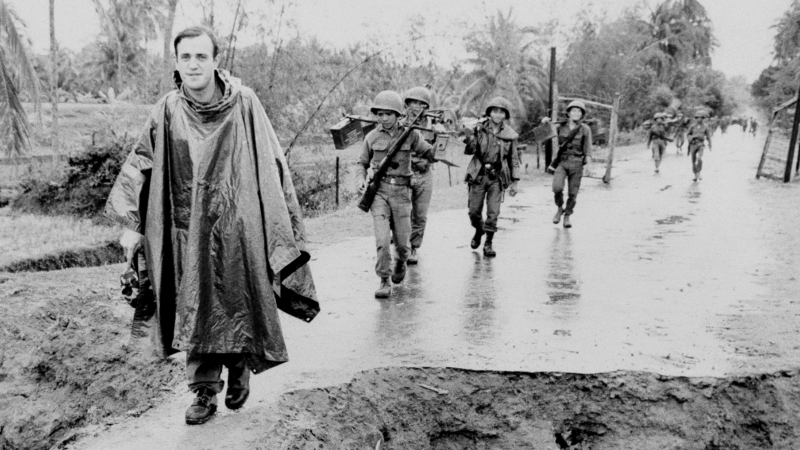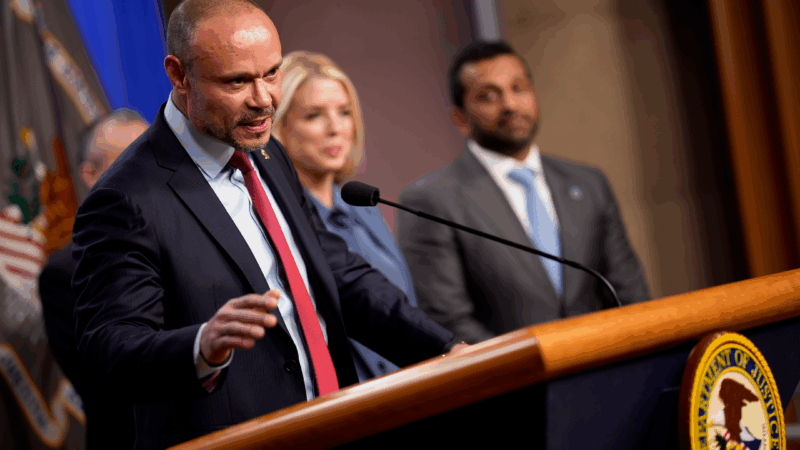In the Golan Heights, Druze are loyal to Syria. But that loyalty is now severely tested
MAJDAL SHAMS, Golan Heights — For his entire life, Jalaa Ayoub could see Syria, just a few dozen yards away from the eastern edge of his town in the Israeli-occupied Golan Heights. But he could not go there.
Then, in July, as deadly fighting broke out between different religious factions, he decided, with no hesitation, to walk across the border into southern Syria to help protect relatives who live there.
“We have total allegiance to Syria,” Ayoub, 37, says. “To me it is my motherland, and therefore I wanted to go there.”
Ayoub is part of the majority Druze community in the town of Majdal Shams. About 1 million strong, the Druze split off from Shia Islam centuries ago and live scattered across Israel, Lebanon, Jordan, Syria and in the Golan Heights. That’s where Ayoub lives, on land which once belonged to Syria but was annexed by Israel in a 1967 war.
Despite more than five decades under Israeli control, the Druze in the Golan remain fiercely connected to their Syrian identities. Most have refused Israeli citizenship, instead choosing to attach themselves to the fate of neighboring Syria.
But their loyalties to Syria have been tested by sectarian fighting over the last weeks in the Sweida region, in southern Syria. More than 1,000 people, many civilians, have been killed in clashes between some Sunni Bedouin tribes, Syrian government forces and factions of the Druze.
The deadly violence has challenged the cohesion of Syria’s fragile interim government. It has exposed long-running rifts that Syria’s new leaders have struggled to contain since taking power last December.
Amid accounts of atrocities and executions carried out by all factions, the Druze in the Golan Heights say they feel disillusioned, even betrayed by Syria’s interim government, headed by Ahmed al-Sharaa, a former militant affiliated with al-Qaida.
“This regime came to dissect people, to divide people and to create sectarianism among people,” says Ayyoub, mustachioed and wearing the traditional baggy trousers of Druze men. “The regime showed us what their beliefs are, and we are against those beliefs.”
As violence escalated, the borders opened
Before a tentative government ceasefire in late July, Druze civilians in Syria trying to escape the bloodbath in Sweida began heading towards Majdal Shams, in the Golan Heights.
Haniye Abuzaid, a Majdal Shams resident, said she was sitting at home watching television one July morning when her daughter called with unbelievable news: her niece and her niece’s daughter had crossed from Syria into the Golan Heights.
“I was so happy to see her,” Abuzaid said of her niece. “I had not seen her in 40 years.”
Her relatives had simply walked across the border. Israeli border guards were allowing people to cross through an area known as “Shouting Hill,” so named because family members standing on opposite sides are close enough to see and hear each other.
Sayyid Ahmad, 62, a baker in Majdal Shams, said his four sons also headed into Syria to see family during the worst of the fighting. It was a trip, he said, that solidified his family’s ties to Syria. “We had to offer help. We brought food. We brought financial help,” he recounts.
But his love for Syria does not extend to the country’s interim leader, Ahmed al-Sharaa, whose militant group Hayat Tahrir al-Sham overthrew the Assad regime last December.
“Golani is a terrorist,” Ahmad shouts, referring to Sharaa by his nom de guerre.
Since coming to power, Sharaa has struggled to convince various armed factions across Syria to lay down their weapons and to join a new, national army under central government control.
Ethnic and religious minority groups remain distrustful of Sharaa, and the majority-Druze community in Sweida had been one of the major holdouts in demilitarizing, along with Kurdish militias in Syria’s northeast who are in negotiations over how to merge with the national military.
“Sharaa came to Sweida, and he wanted immediately to disarm the people, and he wanted to impose his rules onto the people,” says Kifah Shaar, a resident of Majdal Shams. “And it developed into killings.”
When Sharaa ordered government troops to deploy to Sweida, ostensibly to tamp down reports of ongoing kidnapping between Bedouin tribes and Druze militias, some Druze fighters accused Syrian government troops of siding with the Bedouins.
“That army of Sharaa’s is not a decent Syrian army that will take care of us,” says Ahlam Garairreh, 45, a Druze cook in Majdal Shams who was born and raised in Sweida. She says six of her relatives were killed in the fighting this July.
During the civil war against the ousted Assad regime, she says her family in Sweida helped rebels and refugees of all backgrounds.
“They ate our food, and they slept on our mattresses,” Garairreh says, shaking with anger, referring to Sunni Bedouin tribesmen. “Now they are slaughtering us.”
“Make us feel safe”
Shaar, 34, makes the morning’s falafel in Majdal Shams while pondering the day’s fresh horrors from Sweida: she’s been hearing reports of fellow Druze executed, or buried in mass graves in southern Syria, before a tentative ceasefire was reached in late July.
The Syrian government also evacuated around 1,500 Bedouin civilians displaced or endangered by Druze militiamen.
Nearby, Shaar’s husband Mu’thad, a restaurant manager, shakes his head as he mixes a large, quivering batch of ground chickpeas.
“Sharaa needs to make the Druze feel safe. He needs to establish security and stability. He needs to do it in a gentle way,” he says. “Sharaa needs to make the Druze feel that they are important members of the society.”
Their fears — that minority groups like the Druze will be targeted by Sunni Muslim factions in Syria — were amplified this past March, as Syrian government forces were implicated in the massacres of more than 1,400 people, mostly of the Alawite ethnic minority, along Syria’s Mediterranean coast. A report by Syria’s interim government this month found no evidence that Syrian military leadership ordered the killings.
Further inflaming religious divides in Syria has been intervention by Israel in the conflict. Since last December, it has been striking targets in Syria, including in Sweida — in order, Israel says, to protect the Druze.
“Our interests in Syria are known, limited and clear: first of all, to maintain the status quo in the southern Syria region, and to prevent threats against Israel. The second thing is to prevent harm to the Druze community,” Israel’s foreign minister Gideon Saar said in July.
In Majdal Shams, some in the Druze community welcomed Israel’s strikes, which also hit Syria’s defense ministry in the capital Damascus.
“We have members of the Druze community in the Israeli army, and I do not care if they are from Majdal Shams or not. They are Druze, so I fight with them, and they fight for me,” says Majdal Shams resident Jameel Braiq.
Others here warn the perception of being favored by Israel will make the Druze bigger targets in Syria — and risk inflaming sectarian divides further.
“I think this is the poison that is being put in the discourse and trying to fuel all the hatred among Syrians,” says Wael Tarbieh, a pro-Syrian analyst with the Majdal Shams-based human rights organization, Al Marsad.
Sharaa, Syria’s interim leader, has tried to quell sectarian tensions by promising accountability.
“We must recognize that any attempt to fragment the unity of the Syrian people or to exclude any of its components is a direct threat to Syria’s stability,” he said in a speech shortly after agreeing to a ceasefire in Sweida. “The Syrian state is committed to protecting all minorities and sects in the country and will proceed with holding all violators accountable, regardless of who they are.”
But the fighting in Sweida has only widened sectarian rifts and emphasized factional identities once again.
“I used to be secular before. But I’m not secular anymore after what I’ve seen in Sweida,” says Ahmad, the baker.
He says with tears in his eyes that after seeing his fellow Druze killed in Syria, he has decided to practice the Druze religion and has started praying again.
Nuha Musleh contributed reporting from the Golan Heights.
Transcript:
MARY LOUISE KELLY, HOST:
Syria has reached an uneasy ceasefire between armed Bedouin clans and fighters from the Druze religious minority in the country’s south. At least for now, that halts a wave of deadly sectarian violence in the country. The unrest had strained Syria’s fragile interim government. It was further complicated by Israeli military intervention. And the conflict didn’t just expose deep divisions within Syria. It also tested the loyalties of Druze living just across the border in the Israeli-occupied Golan Heights, which is where we find NPR’s Emily Feng.
EMILY FENG, BYLINE: For all 37 years of his life, Jalaa Ayoub could see Syria, but he could not freely go there.
JALAA AYOUB: (Non-English language spoken).
FENG: Syria was just a few dozen yards away from the eastern edge of his town in the Israeli-occupied Golan Heights. Ayoub is part of a tight-knit majority community of Druze, a religious minority who live in Syria and across the Middle East.
AYOUB: (Non-English language spoken).
FENG: This July, as deadly fighting broke out in southern Syria between Druze and Sunni Bedouin militias, Ayoub decided to walk across the border to Syria to help protect relatives who live there.
AYOUB: (Non-English language spoken).
FENG: “We have total allegiance to Syria,” he says. “To me, it is my motherland, and therefore, I wanted to go there.” His town of Majdal Shams in the Golan is so close to Syria, other residents like Haniye Abuzaid come to the Shouting Hill – so named because family members standing on opposite sides are close enough to see and hear each other.
HANIYE ABUZAID: (Non-English language spoken).
FENG: Abuzaid said she was sitting at home watching television in July when her daughter called with unbelievable news. Her niece and her niece’s daughter had crossed the Shouting Hill from Syria into Majdal Shams.
ABUZAID: (Non-English language spoken).
FENG: “I was so happy to see her,” Abuzaid said of her niece. “I had not seen her in 40 years.” They were escaping fighting in Sweida in southern Syria. More than 1,000 people – many civilians – have been killed in clashes between some Sunni Bedouin tribes, Syrian government forces and some factions of the Druze. There have been reports of atrocities, like the executions of civilians, on all sides. The fighting has tested the strong loyalties the Druze of the Golan Heights have to Syria.
SAYYID AHMAD: Syria first. Syria first, Syria first.
FENG: That’s Sayyid Ahmad, a baker in the town of Majdal Shams. He says he is Syrian first, Druze second. But as patriotic as Ahmed is to Syria, he feels disillusioned, even betrayed, by Syria’s interim government.
AHMAD: Because he’s Julani – he’s terrorist – terrorist.
FENG: Like most Druze, Ahmed sees Syria’s current leader, Ahmed al-Sharaa – whom he calls by his nom de guerre Julani – as a terrorist because the Syrian leader is a former militant once affiliated with al-Qaida. And Sharaa has struggled to convince various armed factions like the Kurds and the Druze across Syria to lay down their weapons and reunite a Syria fractured by years of civil war.
(SOUNDBITE OF FOOD FRYING)
FENG: In Majdal Shams, restaurant owner Mu’thad Shaar fries the morning’s falafel while pondering the fighting. He says Syria’s leader, Sharaa, needs to convince ethnic minorities like the Druze that they are safe.
MU’THAD SHAAR: (Non-English language spoken).
FENG: He says Sharaa, the leader, needs to establish security and stability but do that in a more gentle way. “He could not disarm the Druze factions by force,” he says.
AHLAM GARAIRREH: (Non-English language spoken).
FENG: Druze cook Ahlam Garairreh shakes with anger as she makes lunch and excoriates al-Sharaa, Syria’s interim president.
GARAIRREH: (Non-English language spoken).
FENG: She says six of her relatives have been killed in the last weeks of fighting – deaths that fuel further distrust among the Druze here of Sharaa and inflame sectarian identities once again.
AHMAD: (Non-English language spoken).
FENG: Sayyid Ahmad, the baker, says, with tears in his eyes, that even though he’s been secular for years, after seeing his fellow Druze killed in Syria, he has decided to practice the Druze religion again. And he now prays daily. Emily Feng, NPR News, Majdal Shams in the Israeli-occupied Golan Heights.
Where we went: NPR’s U.S. travel guide for the curious
NPR's staff traveled a lot in 2025. From a Mardi Gras workshop to a festival celebrating the mythical Mothman, here are some places and events we thought you might want to check out, too.
These federal workers proudly served the American people. Then came Trump’s upheaval
Mass firings, buyouts and heightened uncertainty led to an exodus of federal workers in 2025. More than 300,000 employees will be out of the government by the end of December.
Mourners grieve 10-year-old slain in Bondi mass shooting as Australia’s leader pledges new hate laws
Hundreds of mourners bearing bright bouquets and clutching each other in grief gathered at a funeral in Sydney on Thursday for a 10-year-old girl who was gunned down in an antisemitic massacre during a Hanukkah celebration at Bondi Beach.
US announces massive package of arms sales to Taiwan valued at more than $10 billion
The Trump administration has announced a massive package of arms sales to Taiwan valued at more than $10 billion that includes medium-range missiles, howitzers and drones, a move that is sure to infuriate China.
Pulitzer Prize-winning correspondent Peter Arnett has died
Peter Arnett, the Pulitzer Prize-winning reporter who spent decades dodging bullets and bombs to bring the world eyewitness accounts of war from Vietnam to Iraq, has died. He was 91.
FBI Deputy Director Dan Bongino says he will step down in January
Bongino's tenure was at times tumultuous, including a clash with Justice Department leadership over the Epstein files. But it also involved the arrest of a suspect in the Jan. 6 pipe bomber case.








